Home>Garden Essentials>What Was The Benefits Of Crop Rotation


Garden Essentials
What Was The Benefits Of Crop Rotation
Modified: March 15, 2024
Discover the numerous benefits of implementing crop rotation in your garden. Find out how this sustainable practice can improve soil fertility and yield healthier, more abundant crops.
(Many of the links in this article redirect to a specific reviewed product. Your purchase of these products through affiliate links helps to generate commission for Storables.com, at no extra cost. Learn more)
Introduction
Crop rotation is a time-honored agricultural practice that involves systematically changing the type of crops grown in a particular field over a period of time. It is essentially a strategy of rotating crops in a planned sequence to maximize productivity and minimize various agronomic challenges. This practice has been used for centuries, with evidence dating back to ancient civilizations such as the Romans and the Chinese.
The concept of crop rotation revolves around the idea that different plants have different nutrient requirements and interact with the soil in distinct ways. By rotating crops, farmers can effectively manage soil fertility, pest and disease pressure, weed growth, and overall crop yield. The benefits of crop rotation extend far beyond simple crop diversity; it is a holistic approach to sustainable agriculture that promotes soil health, biodiversity, and environmental conservation.
In the following sections, we will delve into the historical background of crop rotation, its mechanisms and benefits, and its relevance in modern agricultural practices. We will explore topics such as nutrient management, pest and disease control, weed suppression, increased crop yield, soil health and fertility, as well as the sustainability, environmental, and economic benefits associated with crop rotation.
It is important to note that while crop rotation is widely recognized for its advantages, it is not a one-size-fits-all solution. The specific crops, rotation cycle, and management practices employed may vary depending on factors such as climate, soil type, and farming system. Nevertheless, the principles and underlying benefits remain consistent across different contexts.
So, whether you are a gardening enthusiast looking to optimize your home garden or a commercial farmer seeking sustainable agricultural practices, understanding the benefits of crop rotation can be incredibly valuable. By implementing this age-old technique, you can improve your soil health, increase crop yields, reduce reliance on chemical inputs, and contribute to a more environmentally friendly and resilient food production system.
Read on to discover the fascinating world of crop rotation and the numerous benefits it offers to both farmers and the environment.
Key Takeaways:
- Crop rotation benefits soil, reduces pests, and increases crop yield. It’s an ancient practice with modern relevance for healthier gardens and sustainable farming.
- By rotating crops, farmers can improve soil health, reduce reliance on chemicals, and increase profitability. It’s a win-win for the environment and agriculture.
Read more: What Was Crop Rotation?
Historical Background of Crop Rotation
The practice of crop rotation has been ingrained in agricultural practices for centuries, with evidence dating back to ancient civilizations. The Romans, Chinese, and Medieval Europeans all recognized the advantages of rotating crops and implemented various systems to achieve optimal yields and maintain soil fertility.
One of the earliest known records of crop rotation can be traced back to ancient Rome. The Roman agriculturist, Marcus Terentius Varro, recommended a three-year rotation system known as the “lectio triennis.” This system involved planting a legume crop such as peas or beans in the first year to fix nitrogen in the soil, followed by a grain crop in the second year, and allowing the land to lie fallow in the third year. This practice helped restore soil fertility and prevent nutrient depletion.
In ancient China, the legendary emperor Shennong is believed to have introduced crop rotation as early as 2,000 BCE. The Chinese practiced a more complex rotation system called “san nong” or “three-field system.” This system divided the fields into three parts: one for cereal crops, one for legumes, and one left fallow. This rotation allowed for nutrient replenishment and helped control pests and diseases naturally.
During the Middle Ages, European farmers began adopting more sophisticated crop rotation systems. The most common was the “three-field system,” in which fields were divided into three zones: one for winter crops such as wheat and rye, one for spring crops like barley and oats, and one left fallow. This system allowed for better soil fertility management and prevented nutrient exhaustion.
With the advent of modern agricultural practices and the Green Revolution, crop rotation temporarily took a backseat as farmers relied heavily on synthetic fertilizers and chemical inputs to boost yields. However, in recent years, there has been renewed interest in sustainable agriculture, leading to a resurgence in the practice of crop rotation.
Today, farmers around the world are utilizing various crop rotation systems tailored to their specific agricultural needs and environmental conditions. These include simple rotations involving two or three crops, as well as more complex rotations involving a sequence of multiple crops over several years.
The historical background of crop rotation serves as a testament to its effectiveness in maintaining soil fertility, promoting sustainable agriculture, and ensuring long-term food security. By learning from the practices of our ancestors, we can incorporate crop rotation into modern farming systems and reap its numerous benefits. In the following sections, we will explore these benefits in more detail, shedding light on how crop rotation can positively impact nutrient management, pest and disease control, weed suppression, crop yield, soil health, sustainability, and the economy.
Nutrient Management
One of the key benefits of crop rotation is its impact on nutrient management. Different crops have different nutrient requirements, and by rotating crops, farmers can optimize nutrient uptake and reduce the risk of nutrient imbalances in the soil.
Certain crops, such as legumes like peas, beans, and clover, have the unique ability to fix nitrogen from the atmosphere and convert it into a plant-usable form. This process is facilitated by symbiotic bacteria present in the root nodules of these leguminous plants. When legumes are incorporated into a crop rotation, they can enrich the soil with nitrogen, reducing the need for synthetic nitrogen fertilizers in subsequent crops.
On the other hand, crops like corn and wheat are heavy feeders of nitrogen. By including nitrogen-fixing legumes in the rotation before planting these nitrogen-demanding crops, farmers can ensure an adequate supply of nitrogen without relying solely on synthetic fertilizers. This practice not only reduces the cost of inputs but also minimizes the risk of nitrogen leaching into water bodies, causing pollution.
Crop rotation also helps with the management of other essential nutrients, such as phosphorus, potassium, and micronutrients. Different crops have varying abilities to extract nutrients from the soil, depending on their root systems and nutrient requirements. By rotating crops with varied nutrient demands, farmers can effectively manage the nutrient levels in the soil and prevent depletion or excess accumulation of specific nutrients. This balanced approach enhances overall soil fertility and reduces the need for excessive fertilizer application.
Furthermore, crop rotation can help break pest and disease cycles that are specific to certain crops. Many pests and diseases have a host-specific relationship, meaning they target particular crops and thrive in monoculture systems. By rotating crops, farmers can disrupt the life cycles of pests and diseases, reducing their populations and the need for chemical interventions.
Additionally, crop rotation can promote biodiversity and beneficial organisms in the soil. Different crops have diverse root structures, exudates, and residues that support a wide range of soil microorganisms, including beneficial bacteria, fungi, and earthworms. These organisms play crucial roles in nutrient cycling, organic matter decomposition, and soil structure formation, contributing to overall soil health and fertility.
In summary, crop rotation is a powerful tool for nutrient management in agriculture. By strategically planning crop rotations, farmers can optimize nutrient availability, reduce reliance on synthetic fertilizers, improve soil fertility, and enhance the overall sustainability of their farming systems. The benefits of nutrient management through crop rotation extend far beyond individual fields, as it also contributes to reducing nutrient runoff and pollution, safeguarding water quality, and preserving the health of surrounding ecosystems.
Pest and Disease Control
Crop rotation plays a significant role in pest and disease control by disrupting the life cycles of harmful organisms and reducing their populations. Monoculture systems, where the same crop is grown year after year, create favorable conditions for pests and diseases to thrive. However, by implementing crop rotation, farmers can break this cycle and minimize the risk of infestations.
Different crops have varying vulnerability to specific pests and diseases. By rotating crops, farmers can avoid planting the same susceptible crop in the same field for consecutive seasons, effectively reducing the build-up of pests and diseases in the soil. Pests and diseases that rely on a specific host plant are starved of their food source, forcing them to either die off or move to other areas where their preferred host is present.
In addition to preventing pest and disease buildup, crop rotation can also disrupt the life cycles of insects and pathogens. Many pests and diseases have specific timing requirements for their life stages, such as hatching, reproduction, or overwintering. By changing the crop species grown in a field, farmers can interrupt these cycles, making it more difficult for pests and diseases to complete their life cycles successfully.
Furthermore, crop rotation can help reduce the need for chemical pesticides. By incorporating less susceptible crops into the rotation, farmers can naturally suppress pest populations without resorting to synthetic chemicals. For example, certain crops, like marigolds, have been found to repel certain pests or attract beneficial insects that prey on pests. By including such companion plants in the rotation, farmers can create a more balanced ecosystem that reduces pest pressure.
Crop rotation also allows for the implementation of cultural control measures. For instance, certain crops, like mustard and radish, release natural compounds into the soil that can suppress soil-borne diseases, such as nematodes and fungal pathogens. By incorporating these crops into the rotation, farmers can effectively manage these diseases without relying solely on chemical treatments.
Moreover, crop rotation can promote biodiversity, which is crucial for natural pest control. Diverse crop rotations create a more complex habitat that attracts beneficial insects, birds, and other predators. These natural allies feed on pest insects, helping to keep their populations in check.
Overall, crop rotation is an essential practice for pest and disease control. It provides a sustainable and environmentally friendly approach by reducing the reliance on chemical pesticides, minimizing the risk of pest and disease outbreaks, and promoting biodiversity in the agricultural landscape. By implementing thoughtful crop rotation systems, farmers can create a more resilient and balanced ecosystem that naturally mitigates the impact of pests and diseases, ultimately leading to healthier and more productive crops.
Weed Suppression
Weeds are a common problem in agriculture, competing with crops for resources such as water, nutrients, and sunlight. They can significantly reduce crop yields if not effectively managed. Fortunately, crop rotation offers an effective strategy for weed suppression.
Different crops exhibit varying abilities to outcompete and suppress weeds. By rotating crops with different growth habits, farmers can disrupt weed development and limit their impact on crop growth. For example, crops with dense canopies, such as corn or sorghum, have excellent weed-suppressing qualities, shading out weed seedlings and reducing their growth. By including these crops in rotation, farmers can effectively suppress weed emergence and growth, reducing the need for excessive herbicide use.
Crop rotation also helps break the weed life cycle. Weeds have varying life spans and germination timings throughout the growing season. By changing the crop species grown in a field, farmers can disrupt the timing of weed emergence, making it more difficult for specific weed species to establish and multiply. This approach limits the weed seed bank in the soil and reduces the overall weed pressure over time.
In addition to crop competition and timing, crop rotation also allows for the implementation of cultural weed control practices. For instance, some crops, like legumes and cover crops, have allelopathic properties, releasing natural compounds that inhibit weed growth. By incorporating these crops into the rotation, farmers can naturally suppress weed populations without relying solely on herbicides. This approach reduces the risk of herbicide resistance and promotes sustainable weed management.
Crop rotation can also provide opportunities for strategic tillage and weed control. By rotating crops, farmers can alter the timing and frequency of tillage operations, which can disrupt weed growth and seedling emergence. For example, a conservation tillage system that includes cover crops and minimal soil disturbance can help control weeds by maintaining a good crop canopy and limiting the exposure of weed seeds to sunlight for germination.
Furthermore, crop rotation allows for the efficient use of herbicides. By rotating crops, farmers can use herbicides with different modes of action, reducing the risk of developing herbicide-resistant weed populations. This approach helps to preserve the long-term effectiveness of herbicides and prevents the over-reliance on a single herbicide for weed control.
Overall, crop rotation is a valuable tool for effectively managing weeds in agriculture. By strategically planning crop rotations, farmers can integrate weed suppression practices such as crop competition, timing disruption, cultural control, and strategic tillage. This holistic approach reduces weed pressure, minimizes herbicide use, and contributes to sustainable and environmentally friendly weed management systems on the farm.
Crop rotation helps improve soil fertility, reduce pest and disease pressure, and increase crop yield. It also helps to break the cycle of soil depletion and maintain a healthy balance of nutrients in the soil.
Increased Crop Yield
One of the primary goals of any farmer is to achieve high crop yields. Crop rotation can significantly contribute to increased crop yield by enhancing soil health, nutrient availability, pest and disease control, and overall plant vigor.
One of the key ways that crop rotation enhances crop yield is through improved soil health. Different crops have varying root structures and nutrient requirements, which lead to different patterns of nutrient uptake and release. By rotating crops with diverse root systems, farmers can improve soil structure, increase organic matter content, and enhance nutrient cycling. As a result, the soil becomes more fertile, providing crops with optimal growing conditions and access to necessary nutrients, ultimately leading to higher yields.
Furthermore, crop rotation helps in effective nutrient management. Different crops have different nutrient requirements, and by including crops that complement each other in their nutrient needs in the rotation, farmers can optimize nutrient utilization. For example, leguminous crops like soybeans or peas fix atmospheric nitrogen, enriching the soil with this essential nutrient. When rotated with nitrogen-demanding crops like corn or wheat, the availability of nitrogen is improved, supporting healthier and more productive plants, leading to increased crop yields.
Crop rotation also plays an essential role in pest and disease control, which significantly impacts crop yields. When the same crop is grown year after year in a monoculture system, pest and disease populations can increase, leading to yield loss. By rotating crops, farmers can disrupt the life cycles of pests and diseases, reducing their populations and the associated crop damage. This, in turn, leads to healthier plants and higher yields.
In addition to pests and diseases, weeds can also compete with crops for resources, reducing yield potential. By incorporating crops with competitive growth habits and shading capabilities into the rotation, farmers can suppress weed growth and minimize their impact on crop yield. Weed-free fields allow crops to utilize water, nutrients, and sunlight more efficiently, resulting in higher yields.
Moreover, crop rotation can improve soil moisture management. Different crops have different water requirements and rooting depths. By rotating crops, farmers can manage water availability more effectively, ensuring that each crop gets the necessary moisture without placing excessive demands on the soil. This balanced approach helps prevent water stress and optimizes crop yield potential.
Another benefit of crop rotation on crop yield is the break in plant pathogen cycles. By rotating crops, farmers can reduce the buildup of pathogens specific to certain crops, minimizing the risk of disease outbreaks. Planting non-host or less susceptible crops disrupts the cycle of pathogens, reducing disease pressure and allowing subsequent crops to grow more vigorously and yield better.
In summary, crop rotation is a powerful tool for increasing crop yield. By improving soil health, optimizing nutrient availability, managing pests, diseases, and weeds, and ensuring efficient water usage, farmers can maximize their crop production. The strategic integration of different crop species in a rotation plan optimizes the use of resources, reduces the risk of yield-limiting factors, and ultimately leads to higher crop yields.
Soil Health and Fertility
Soil health and fertility are crucial factors that directly influence the success of crop production. Crop rotation can play a significant role in promoting soil health and fertility by improving soil structure, increasing organic matter content, enhancing nutrient availability, and reducing soil erosion.
One of the primary benefits of crop rotation is its impact on soil structure. Different crops have different root systems, which exert varying degrees of pressure on the soil. Rotating crops with diverse root structures helps break up compaction, improves soil aeration, and enhances water infiltration. This results in a more friable and well-structured soil that promotes better root development, nutrient uptake, and overall plant health.
Crop rotation also contributes to increased organic matter content in the soil. Organic matter is a key component of fertile soil as it improves moisture retention, nutrient holding capacity, and microbial activity. By incorporating crops with higher biomass and residue production, such as cover crops or legumes, into the rotation, organic matter is returned to the soil through root decay and crop residue decomposition. This boosts soil fertility, promotes beneficial microorganisms, and helps build a sustainable soil ecosystem.
Furthermore, crop rotation enhances nutrient availability in the soil. Different crops have varying nutrient requirements, and by rotating crops, the nutrient profile of the soil can be balanced more effectively. For example, leguminous crops have the ability to fix atmospheric nitrogen into the soil with the help of symbiotic bacteria. When these nitrogen-fixing crops are included in the rotation, they increase soil nitrogen levels, benefiting subsequent crops that require higher nitrogen inputs. This reduces the reliance on synthetic fertilizers and helps maintain a more sustainable nutrient management system.
Crop rotation also helps reduce nutrient losses through leaching and runoff. When the same crop is grown continuously without rotation, there is a higher risk of nutrient imbalances and the potential for excess nutrients to leach into groundwater or be carried away by runoff. By diversifying the crop rotation, nutrient uptake is optimized, reducing the risk of nutrient runoff and pollution. This improves nutrient use efficiency, protects water quality, and contributes to environmental conservation.
Moreover, crop rotation reduces soil erosion and promotes soil conservation. Certain crops, such as sod-forming grasses or legume cover crops, have extensive root systems that hold soil in place and prevent erosion. When integrated into the rotation, these crops provide ground cover during vulnerable periods, minimizing the risk of soil loss due to wind or water erosion. This helps preserve soil structure, organic matter content, and nutrient-rich topsoil, ensuring the long-term sustainability of the farming system.
In summary, crop rotation has a profound impact on soil health and fertility. It improves soil structure, increases organic matter content, enhances nutrient availability, reduces nutrient losses, and promotes soil conservation. These benefits contribute to the long-term sustainability and productivity of agricultural systems, as well as reducing the need for excessive chemical inputs. By implementing strategic crop rotations, farmers can cultivate healthy, fertile soils that support thriving plant growth and enable sustainable and environmentally friendly agriculture.
Sustainability and Environmental Benefits
Crop rotation offers a range of sustainability and environmental benefits that contribute to the long-term health and resilience of agricultural systems. By adopting this practice, farmers can minimize the negative environmental impacts associated with monoculture and chemical-intensive farming, while promoting biodiversity, conserving natural resources, and mitigating climate change.
One of the key environmental benefits of crop rotation is the reduction in chemical inputs. In monoculture systems, pests and diseases can become increasingly resistant to pesticides and herbicides, leading to escalating chemical use and environmental pollution. By incorporating crop rotation, farmers can disrupt the life cycles of pests and diseases, effectively reducing the reliance on chemical treatments. This approach promotes natural pest control, minimizes chemical residues in the environment, and helps maintain a healthier ecosystem.
Crop rotation also contributes to enhanced biodiversity in agriculture. Monoculture systems, with their uniform crop plantings, often create a less diverse and imbalanced environment. By rotating crops, farmers can create a varied landscape that supports a multitude of plant species, beneficial insects, birds, and other organisms. This biodiversity helps provide natural pest control, enhances pollination, and fosters a healthier ecosystem overall.
In addition to biodiversity, crop rotation plays a role in conserving natural resources such as water and soil. By diversifying the crop rotation, farmers can optimize water usage by matching the water needs of different crops with the available rainfall or irrigation capabilities. This reduces water stress and the risk of overextraction, ensuring sustainable water management. Furthermore, by improving soil health and structure, crop rotation helps reduce soil erosion, conserves topsoil, and preserves valuable nutrients, preventing their loss into water bodies and promoting sustainable soil conservation.
Crop rotation also contributes to carbon sequestration and mitigates climate change. Different crops have varying impacts on carbon cycling and greenhouse gas emissions. For example, perennial crops or cover crops have a greater potential for carbon sequestration due to their longer growth periods and extensive root systems. By incorporating these crops into the rotation, farmers can enhance soil carbon storage, reducing net carbon emissions. This contributes to climate change mitigation and the promotion of sustainable farming practices.
Furthermore, crop rotation supports agroecological systems by fostering ecological balance and resilience. By integrating diverse crops and cover crops, farmers can mimic the natural processes and ecological dynamics that promote healthy and thriving ecosystems. This approach reduces the need for external inputs, improves soil health and fertility, and creates a more sustainable and resilient farming system that can adapt to changing environmental conditions.
In summary, crop rotation offers numerous sustainability and environmental benefits in agriculture. By reducing chemical inputs, promoting biodiversity, conserving natural resources, and mitigating climate change, it is a critical tool for transitioning towards more sustainable farming practices. By embracing crop rotation, farmers can contribute to a healthier environment, enhance ecosystem resilience, and ensure the long-term viability and productivity of their agricultural systems.
Economic Benefits
Crop rotation offers a range of economic benefits for farmers, contributing to increased profitability, reduced production costs, and a more stable agricultural system. By implementing strategic crop rotations, farmers can optimize resource utilization, diversify their income streams, and improve overall farm efficiency.
One of the primary economic benefits of crop rotation is increased crop yield. Through improved nutrient management, pest and disease control, and weed suppression, crop rotation helps maximize crop productivity. Higher yields translate into increased revenue for farmers, as they can harvest more crops per unit of land, leading to greater profitability.
Moreover, crop rotation can reduce production costs. By incorporating leguminous crops such as soybeans or peas into the rotation, farmers can reduce their reliance on synthetic fertilizers. Legumes have the ability to fix atmospheric nitrogen, enriching the soil naturally and minimizing the need for nitrogen fertilizers. This reduction in fertilizer costs contributes to overall cost savings in crop production.
Another economic benefit of crop rotation is the diversification of income streams. By growing different crops in rotation, farmers can tap into various markets and spread their financial risk. Crop diversification allows farmers to adjust their production according to market demand, ensuring a more stable and profitable farming enterprise. Additionally, different crops have different price fluctuations, and by diversifying their crops, farmers can take advantage of market opportunities and reduce the impact of price volatility on their financial returns.
Crop rotation also contributes to the efficient use of resources, such as water and soil nutrients. By matching crops with their specific water and nutrient requirements, farmers can optimize resource utilization and minimize wastage. This promotes cost savings and improves the overall sustainability of agricultural operations.
In addition, crop rotation helps manage and reduce the risk of pests, diseases, and weeds. This, in turn, minimizes the need for costly chemical inputs such as pesticides and herbicides. By naturally suppressing pest and disease populations through crop rotation, farmers can curtail their reliance on chemical interventions and reduce associated expenses.
Furthermore, crop rotation can have long-term economic benefits by improving soil health and fertility. Healthy soils result in better nutrient availability, water retention, and overall plant vigor, leading to sustained crop productivity over time. By investing in soil health through crop rotation, farmers can avoid costs associated with soil degradation, erosion, and nutrient depletion, which would otherwise impact their long-term productivity and profitability.
Lastly, crop rotation plays a role in increasing farm resilience in the face of climate variability. By diversifying crops, farmers can adapt their production to changing climatic conditions and reduce the risk of total crop failure due to a single, climate-sensitive crop. This resilience helps protect farmers’ incomes and ensures a more sustainable farming operation in the long run.
In summary, crop rotation offers substantial economic benefits to farmers. It increases crop yield, reduces production costs, diversifies income streams, improves resource utilization, and promotes farm resilience. By implementing strategic crop rotations, farmers can enhance their profitability and ensure a more economically sustainable agricultural enterprise.
Read more: What Is Crop Rotation Strip Cropping
Conclusion
Crop rotation is an age-old agricultural practice that offers a wide range of benefits for farmers, the environment, and sustainable food production. Throughout history, its effectiveness has been recognized by ancient civilizations, and it continues to play a vital role in modern farming practices.
The benefits of crop rotation are wide-ranging and encompass various aspects of agriculture. Nutrient management is optimized through the strategic rotation of crops with different nutrient requirements, reducing reliance on synthetic fertilizers and improving overall soil fertility. Pest and disease control are enhanced as the rotation disrupts the life cycles of harmful organisms and reduces the risk of infestations, leading to healthier crops and increased yield potential. Weed suppression is achieved through the introduction of crops that competitively shade out weeds, minimizing their impact on crop growth and reducing the need for excessive herbicide use.
Additionally, crop rotation contributes to the overall health and fertility of the soil. By improving soil structure, increasing organic matter content, and enhancing nutrient availability, it creates a favorable environment for plant growth and optimal crop yields. Sustainable practices such as conserving natural resources, promoting biodiversity, mitigating climate change, and reducing environmental impacts are embraced through the implementation of crop rotation, enhancing the long-term sustainability of farming systems.
From an economic perspective, crop rotation presents numerous advantages for farmers. Increased crop yields, reduced production costs, and income diversification contribute to higher profitability. Efficient resource utilization, minimized reliance on chemical inputs, and improved soil health lead to long-term economic benefits, ensuring the viability and resilience of agricultural operations.
In conclusion, crop rotation is a powerful tool that encompasses a holistic approach to sustainable agriculture. It embodies principles of nutrient management, pest and disease control, weed suppression, soil health, environmental conservation, and economic viability. By implementing well-planned crop rotations, farmers can optimize their yields, protect the environment, and create a more sustainable and resilient food production system.
Whether you are a small-scale gardener or a commercial farmer, understanding the benefits of crop rotation and implementing this practice can lead to healthier crops, increased yields, reduced costs, and a more sustainable approach to agriculture. So, embrace the wisdom of the past and harness the power of crop rotation to cultivate thriving gardens and contribute to a greener and more sustainable future.
Frequently Asked Questions about What Was The Benefits Of Crop Rotation
Was this page helpful?
At Storables.com, we guarantee accurate and reliable information. Our content, validated by Expert Board Contributors, is crafted following stringent Editorial Policies. We're committed to providing you with well-researched, expert-backed insights for all your informational needs.



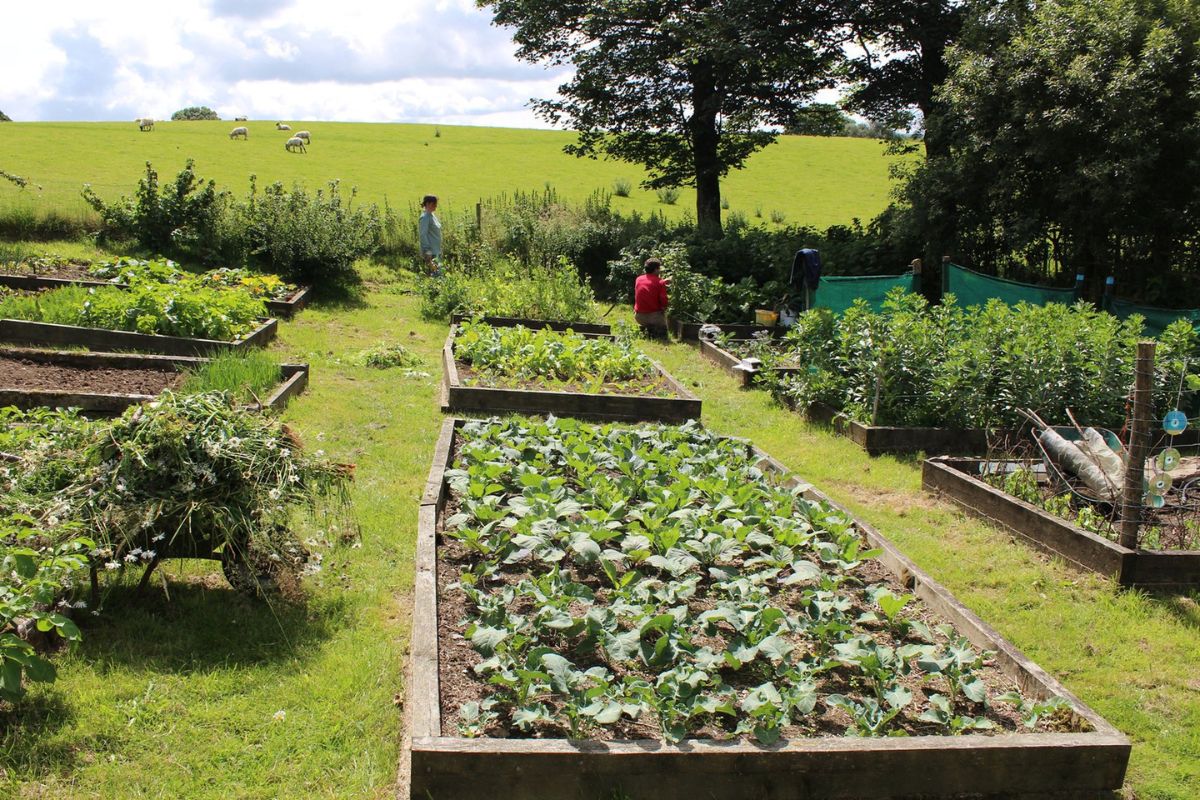
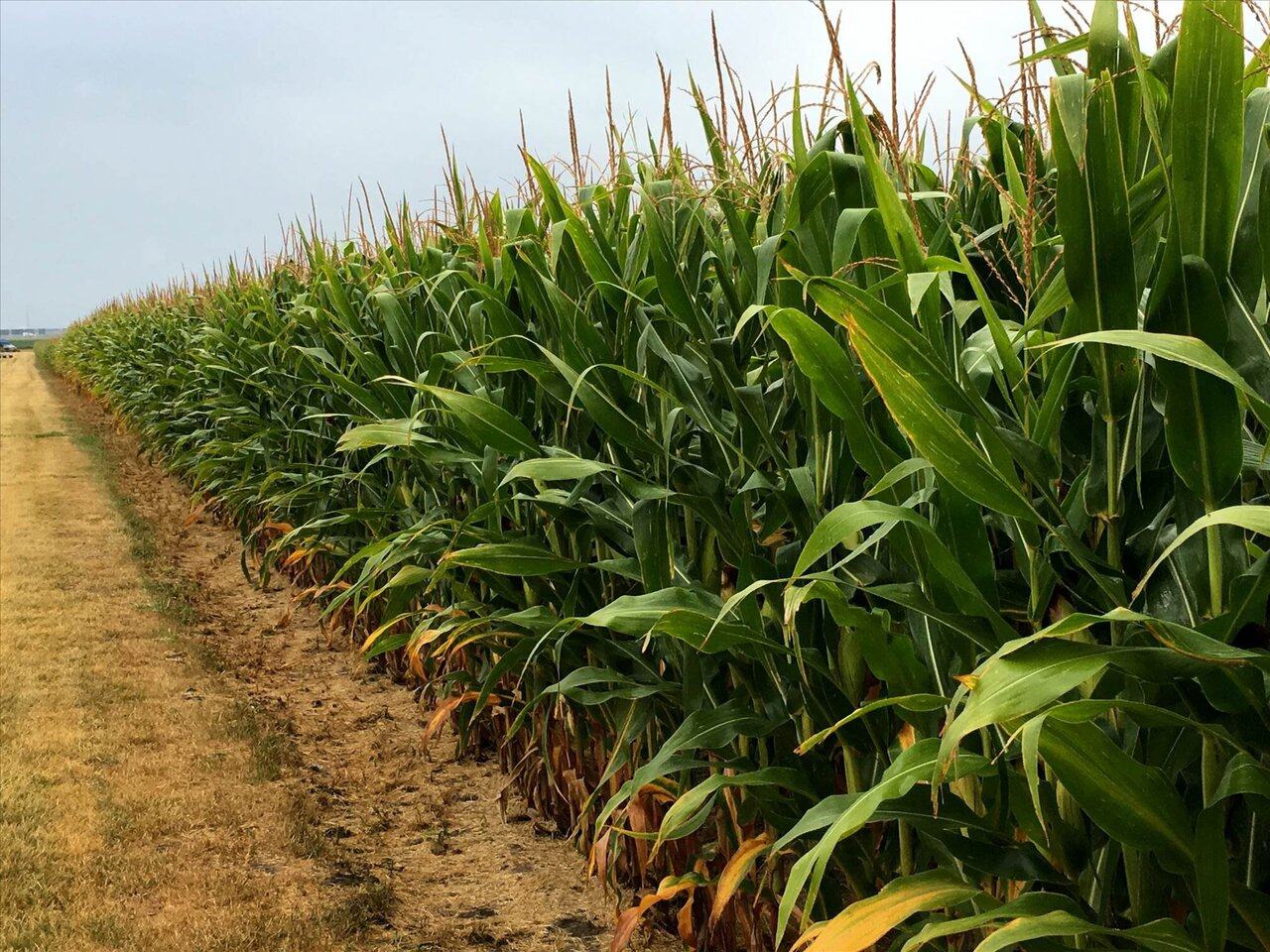
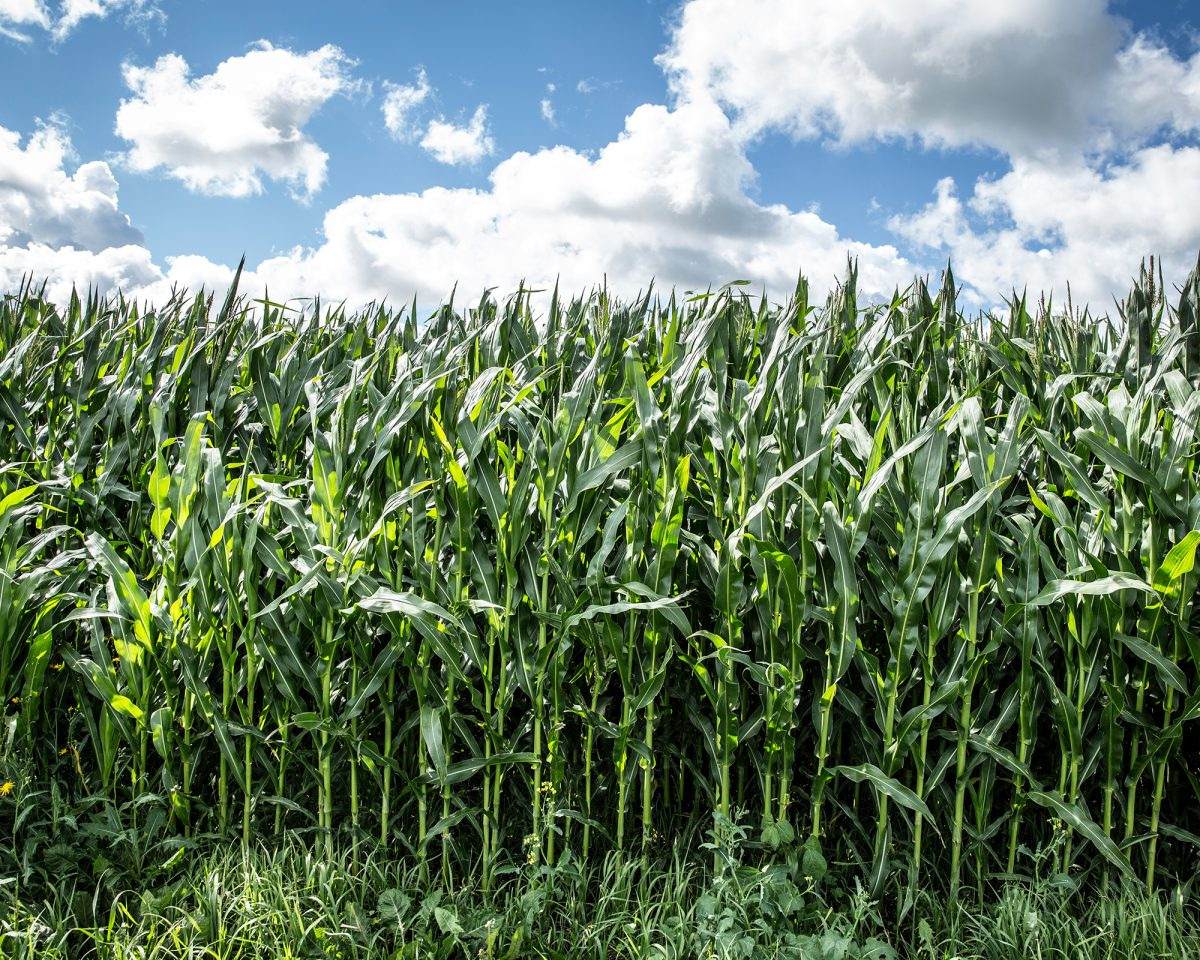

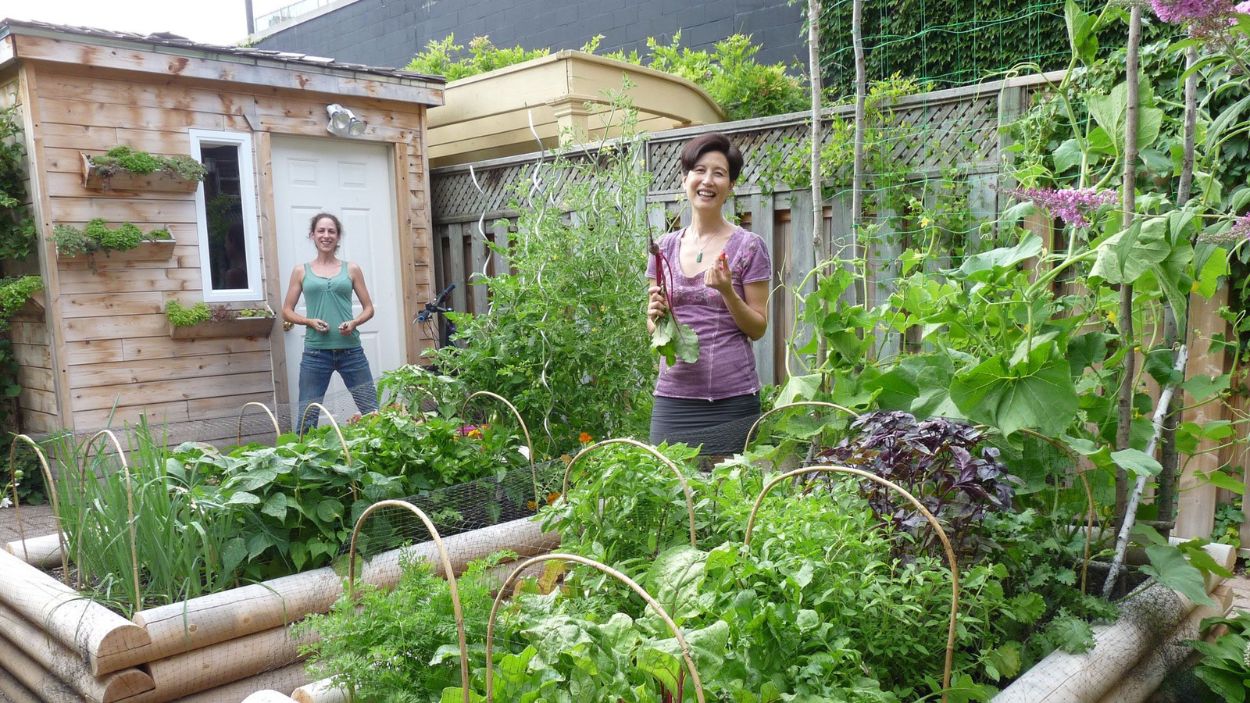

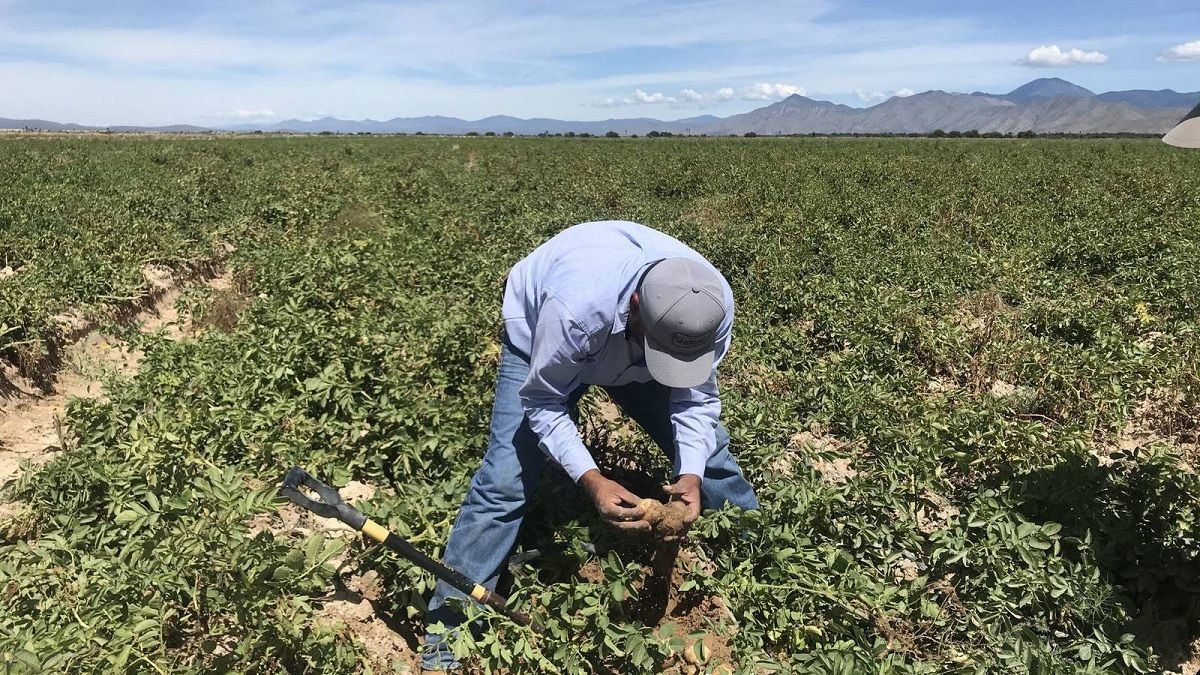
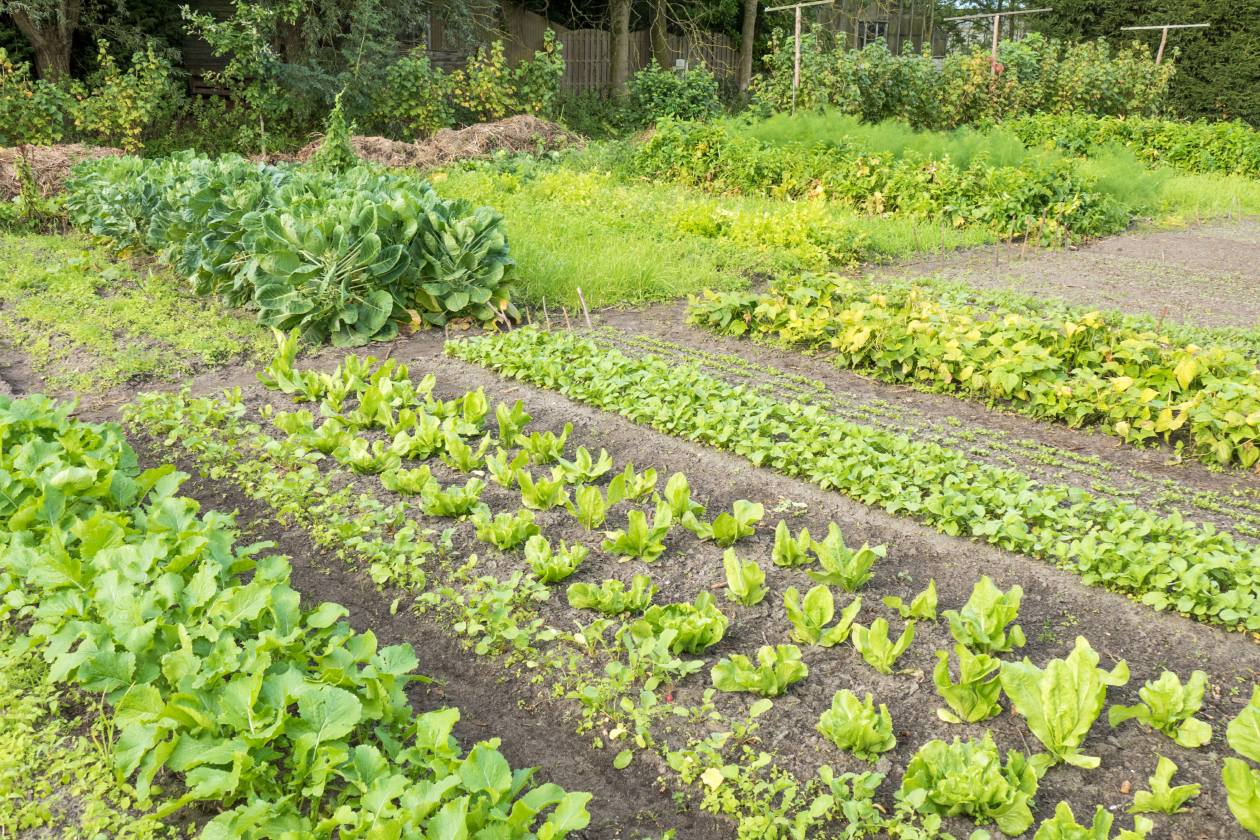



0 thoughts on “What Was The Benefits Of Crop Rotation”